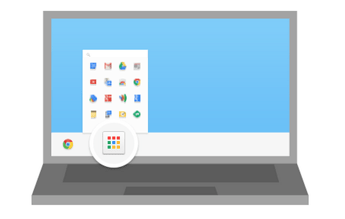Google officially launched its Chrome Apps today, a “new” breed of native/web app hybrid for Chrome OS and Windows that isn’t actually all that new. Google’s Chrome offered so-called packaged apps for quite a while now and today’s “launch” is, for the most part, about bringing these packaged apps out of the developer niche and to consumers.
Chrome Apps are essentially installable web apps that get additional privileges to access some native hardware features. They allow developers to run their web apps outside of the browser and without the usual Chrome user interface. They also make it easier for developers to make their apps available offline and to access local storage, as well as connected devices and cameras over USB and Bluetooth. Just like Chrome itself, these apps update themselves and just like Chrome extensions, they are automatically synced between your machines.
Here is a short video that explains how these packaged apps Chrome Apps work:
On Windows, these apps don’t integrate into the start menu or the task bar. Instead — and this has also been available for quite a while — Chrome adds its own Start menu-like button to the taskbar, which looks quite similar to the Chrome OS app launcher. On the Mac, the app launcher is still behind a flag on the stable version of Chrome, but Google says it will launch both on Apple’s desktop platform and on Linux soon.
To celebrate today’s launch, Google added a special section for packaged apps to its Chrome Web Store. The “For your desktop” collection features the likes of Wunderlist (which launched its packaged app in July), Pocket and former Disrupt Battlefield winner Uberconference.
